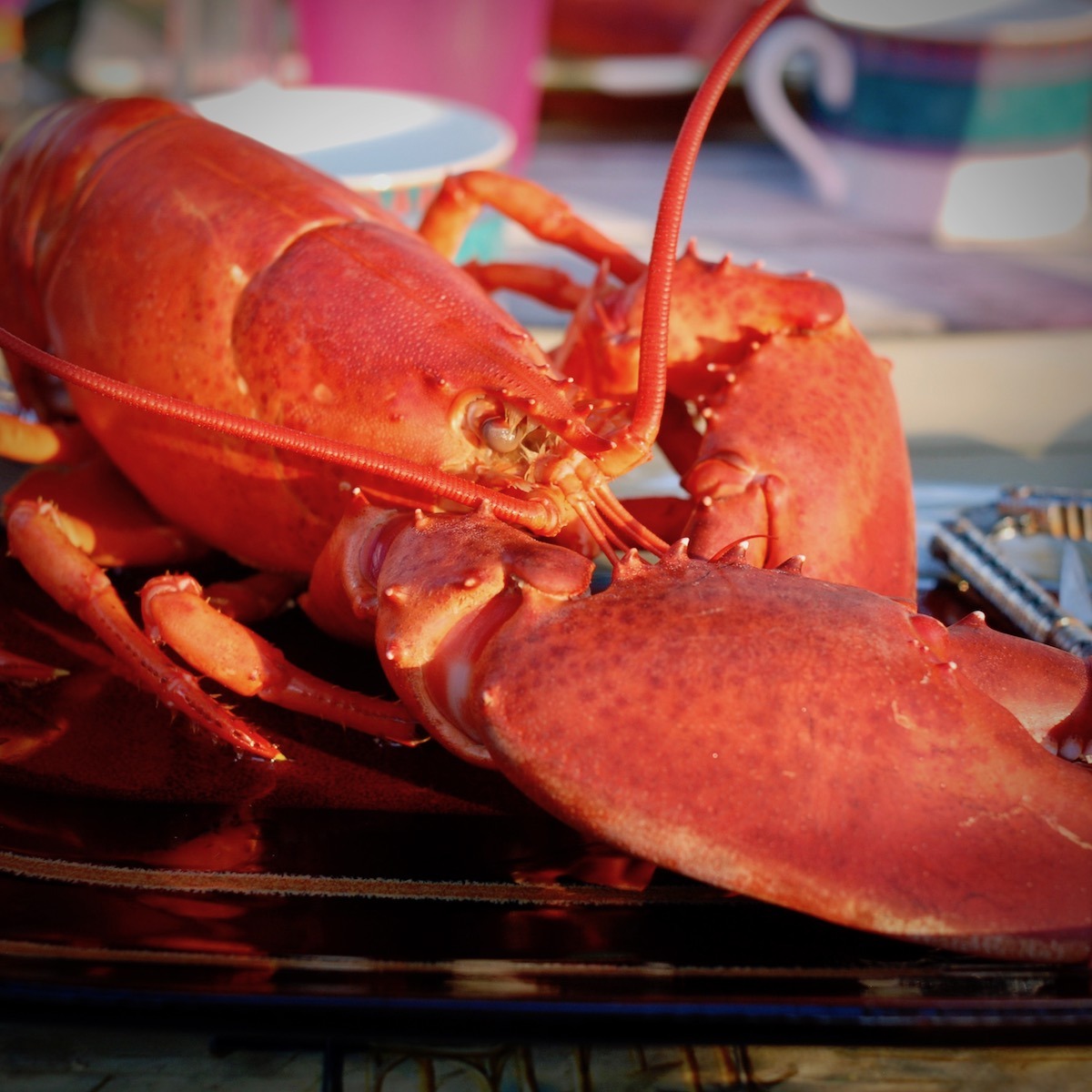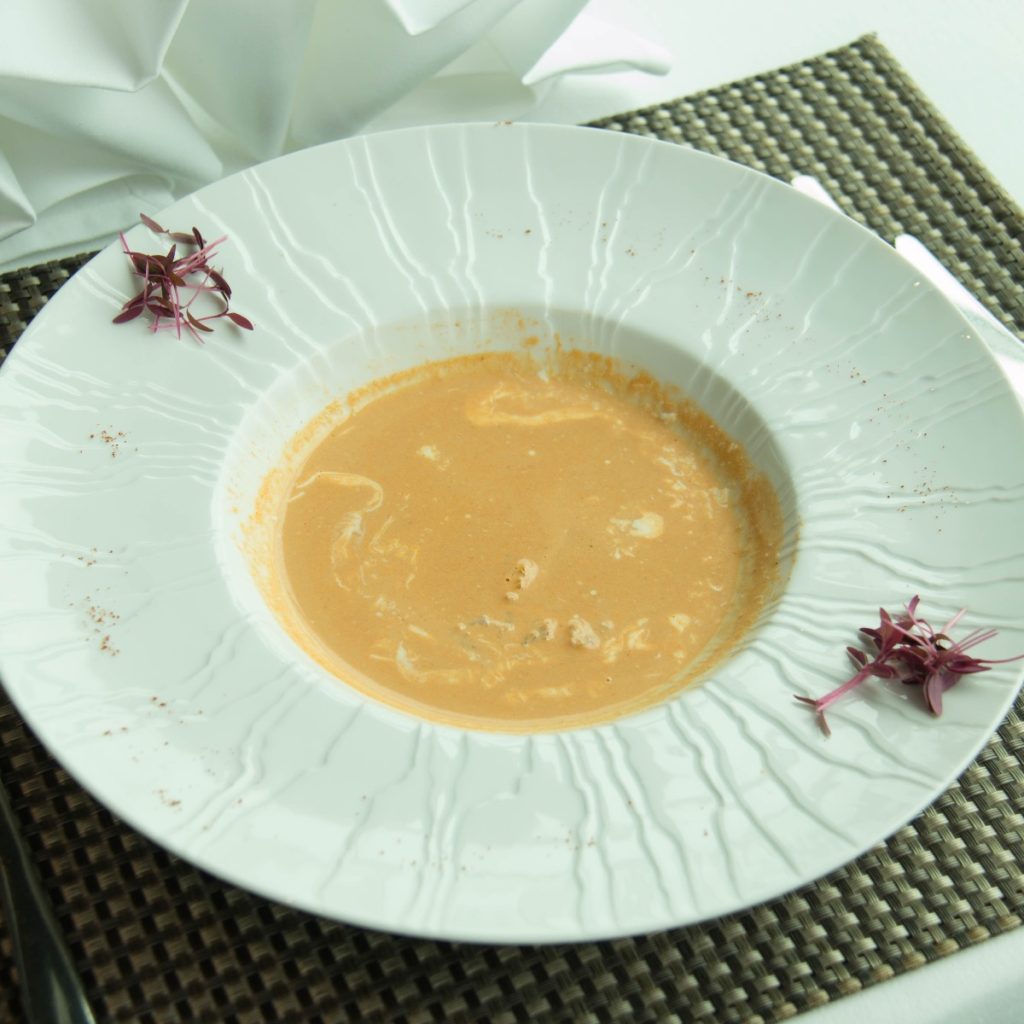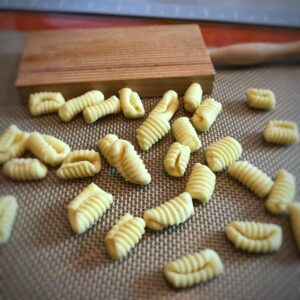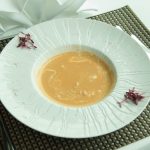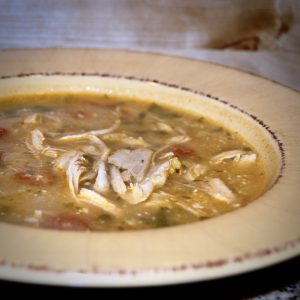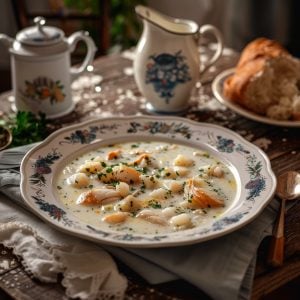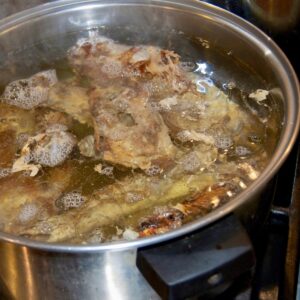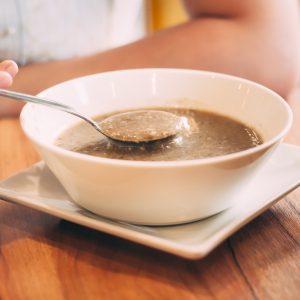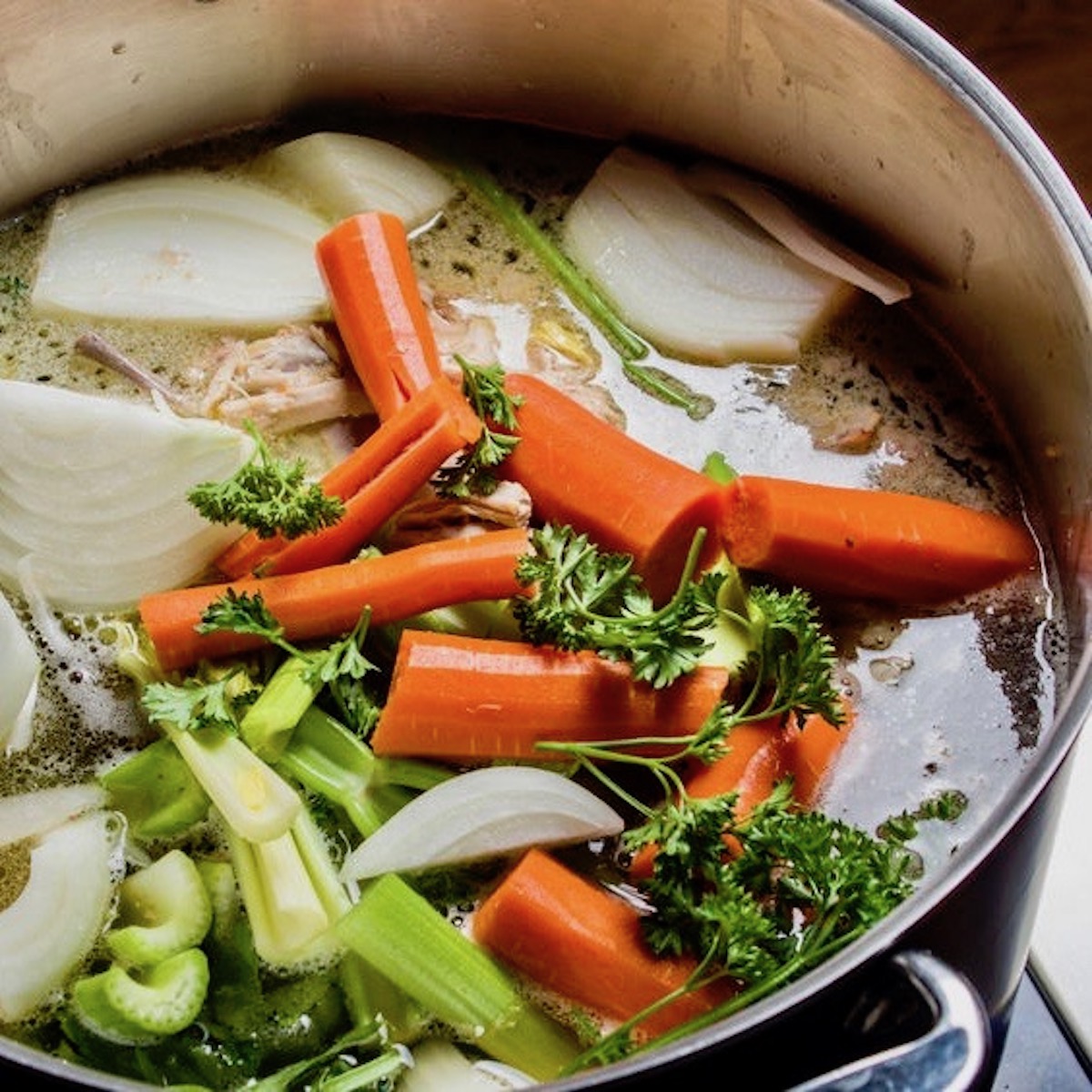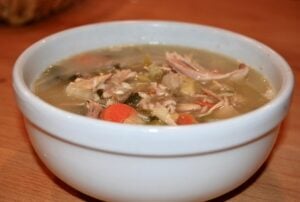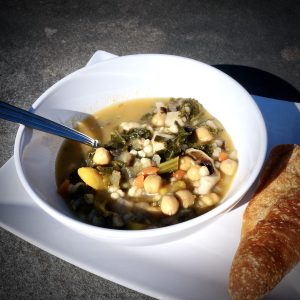Lobster Bisque Recipe
Bisques are a type of soup, historically based on crustaceans (crayfish, lobster, shrimp, or crab), that are thickened in a myriad of ways and then finished with cream.
Naturally, bisques are smooth, creamy, and rich. But the flavor of the base seafood should be poignant and not overpowered by the succulence. Not surprisingly, bisques are French in origin and often associated with more lavish eateries.
This lobster bisque will look at all things Lobster Bisque. It will include some great recipes, a look at how bisques differ from chowders, a little history, and a few other surprises.
Just What Is A Bisque?
Bisque is a rich and creamy soup that is typically made with shellfish, such as lobster, crab, or shrimp. It is a traditional French dish that originated in the country’s coastal regions, where seafood was abundant.
To make a bisque, the shellfish is first cooked, and then its shells and other debris are used to create a flavorful stock. This stock is then combined with butter, onions, celery, and other vegetables to create a base for the soup.
The shellfish meat is added to the soup, along with other ingredients such as brandy or sherry, herbs and spices, and heavy cream. The soup is then simmered until it reaches a smooth and velvety consistency and is garnished with other seafood or croutons before serving.
Smooth and Velvety
One of the unique features of a bisque is its smooth and velvety texture, which is achieved by puréeing the soup and passing it through a fine-mesh sieve. This process removes excess shells or debris and creates a smooth, silky consistency.
Bisques are also known for their rich and flavorful taste, which is achieved by using various ingredients and spices to create a complex and well-balanced flavor profile.
They are often served as a starter or a main course and can be enjoyed on their own or paired with various other dishes. Typically served hot, but it can also be chilled and served as a cold soup during the summer months.
Bisques are a popular choice for fine dining and special occasions and are known for their luxurious and sophisticated flavor.
What Is Lobster Bisque?
Lobster bisque is a rich and creamy soup made with lobster stock, lobster meat, and various other ingredients such as butter, onions, celery, carrots, and brandy or sherry.
It is typically seasoned with a blend of herbs and spices, such as parsley, thyme, and bay leaves. It is garnished with additional lobster meat or croutons before serving lobster bisque is a traditional French dish often served as a starter or a main course and is known for its luxurious and flavorful taste.
What Is a Chowder?
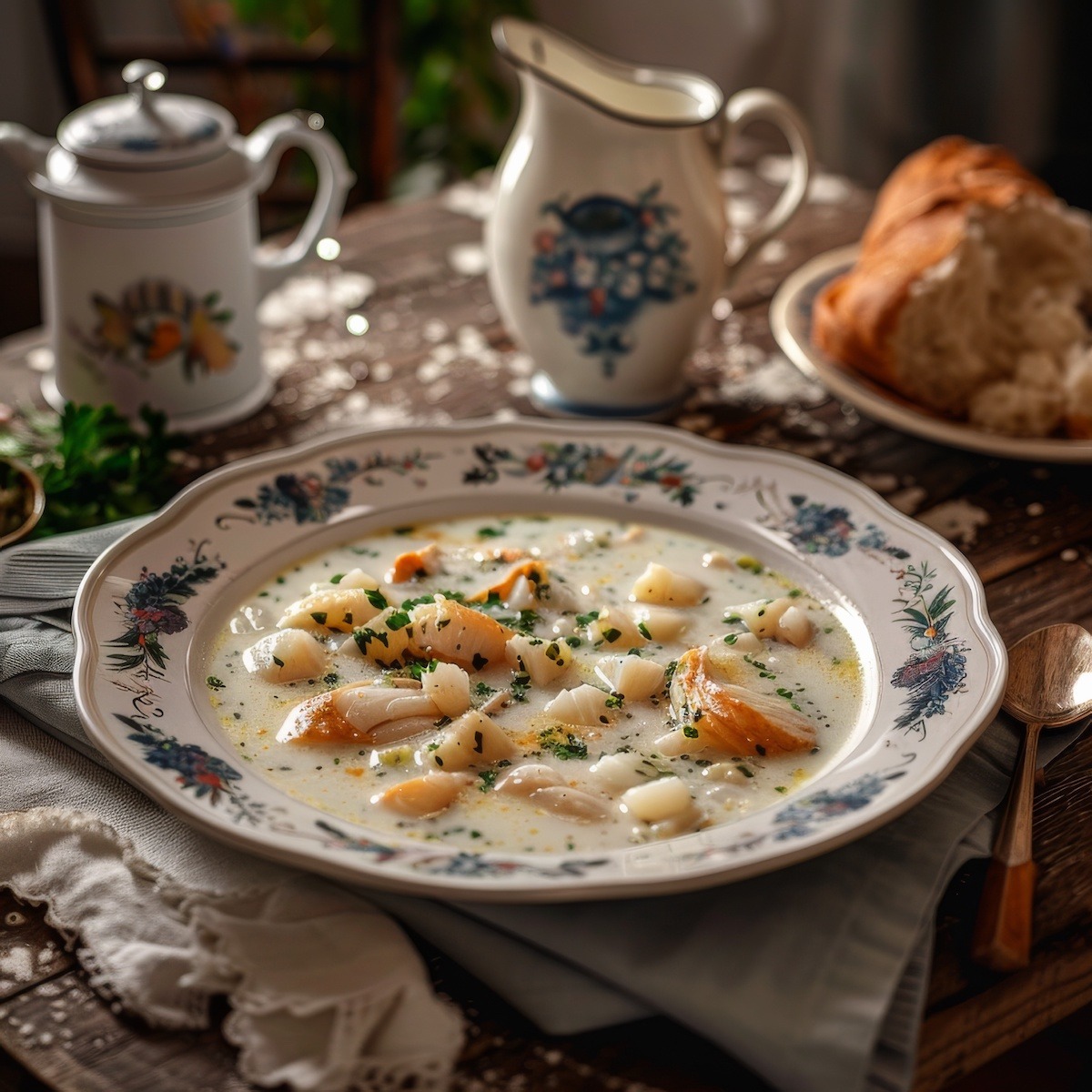
Chowders, on the other hand, are a hearty and thick soup typically made with seafood or vegetables. They are a traditional dish from the eastern coast of the United States, particularly in New England, where seafood was also abundant.
Chowders are made by simmering a variety of ingredients, such as potatoes, onions, celery, and seafood or vegetables, in a flavorful broth. They are often thickened with a roux or flour or cornstarch and are typically served with a variety of garnishes, such as croutons or crackers.
One of the main differences between bisques and chowders is their consistency. Bisques are typically smooth and velvety, while chowders are thick and hearty.
Bisques are also typically made with various ingredients and spices to create a complex and well-balanced flavor profile, while chowders tend to be more uncomplicated and more straightforward in terms of flavor.
Additionally, bisques are typically made with shellfish, while chowders can be made with a variety of ingredients, including seafood, vegetables, or a combination of both.
Cookware for Preparing Lobster Bisque
Working With the Correct Tools Makes the Job Easy
To steam the lobsters, you will need a lobster steamer or a large stock pot with a steamer insert. In addition, you’ll need a large stockpot or soup pot to make the lobster bisque.
The Unpleasant Task – Killing the Lobster
It is important to note that killing a live lobster for any reason, including making a bisque, is a controversial and sensitive topic. Many people believe it is inhumane to kill lobsters, as they are intelligent and social animals capable of feeling pain.
If you do choose to eat lobster, it is essential to handle them with care and to consider more humane methods of killing them, such as the following:
- Boiling: One common method of killing lobsters is placing them in a boiling pot. This method is quick and humane, as the lobsters are unconscious within seconds and die within a few minutes.
- Steaming: Another option is to steam the lobsters in a large pot or steamer basket. This method is similar to boiling, but the lobsters are cooked in steam rather than water.
- Stunning: Some people believe that stunning the lobsters before cooking them is more humane. To do this, you can place the lobster in the freezer for 15-30 minutes to numb it or place it in a sink and use a sharp knife to cut through the back of the head, just above the eyes.
- Electrocution: Another option is to use a device specifically designed for humanely killing lobsters. These devices use electricity to stun the lobsters, rendering them unconscious before they are cooked.
The method you choose may depend on local laws and regulations and your personal beliefs and values. If you are concerned about the humane treatment of animals, it is recommended to research the issue further and consider choosing alternative sources of protein.
What About the Roe and Tomalley?
Lobster roe is the orange-colored eggs that female lobsters produce. It is typically found in small sacs near the lobster’s tail.
Lobster roe is considered a delicacy in some cultures and is often used as a garnish or added to dishes for flavor and color.
Tomalley is a soft, green substance found in the body cavity of lobsters. It is a combination of the liver, pancreas, and other internal organs and is often considered a delicacy due to its rich and flavorful taste.
Tomalley is often used as a flavor enhancer in sauces, soups, and other dishes, or it can be eaten on its own as a garnish.
It is important to note that both lobster roe and tomalley can contain toxins and should be handled and consumed with caution. If you are pregnant, have a compromised immune system, or have certain health conditions, it is recommended to avoid consuming these substances.
Can You Use Lobster Roe and Tomalley in a Lobster Bisque?
They both can be used to add flavor and richness to lobster bisque, but it is essential to handle and consume them with caution. Lobster roe and tomalley can contain toxins, and consuming them can pose a risk to specific individuals, such as pregnant women, people with compromised immune systems, and certain health conditions.
If you choose to use lobster roe or tomalley in your bisque, it is important to cook the soup thoroughly to reduce the risk of foodborne illness.
To use lobster roe in your bisque, gently remove the sacs of roe from the lobster and rinse them thoroughly under cold water. You can add the roe to the soup during the cooking process or use it as a garnish before serving.
To use tomalley in your bisque, you can scoop it out of the lobster’s body cavity and add it to the soup during the cooking process. You can also blend it into the soup to create a smooth and creamy consistency.
It is important to note that the use of lobster roe and tomalley in bisque is a matter of personal preference. Some people may omit them or use alternative ingredients to add flavor and richness to the soup.
How to Buy Lobster & Not Get Ripped Off
“Buyers Beware” Whether you are buying whole Maine lobster or frozen lobster tails, you must be careful to purchase quality products and not get ripped off. I have written two articles that look at these situations and recommend you read them before buying any lobster products online. You can find them at:
How to Buy Lobster Tails & Not Get Ripped Off
How to Buy Live Maine Lobsters & NOT Get Ripped Off
Lobster Bisque Recipe
Equipment
- 1 stock pot
- 1 immersion blender
Ingredients
- 2 lbs lobster cooked and cut into pieces
- ¼ cup butter
- 1 medium onion diced
- 2 stalks celery diced
- 1 carrot peeled and diced
- 1 clove garlic minced
- ¼ cup all-purpose flour
- 4 cups lobster stock
- 1 cup heavy cream
- ½ cup dry white wine
- 1 tablespoon tomato paste
- 1 teaspoon salt
- ¼ teaspoon white pepper
- ¼ teaspoon cayenne pepper
- chopped fresh parsley for garnish
Instructions
- Remove the meat from the lobster and set it aside.2 lbs lobster
- In a large pot, melt the butter over medium heat. Add the onion, celery, carrot, and garlic, and cook until the vegetables are tender about 5 minutes.¼ cup butter, 1 medium onion, 2 stalks celery, 1 carrot, 1 clove garlic
- Stir in the flour and cook for an additional 2 minutes.¼ cup all-purpose flour
- Add the lobster stock, cream, wine, tomato paste, salt, white pepper, and cayenne pepper. Bring the mixture to a boil, reduce the heat to low, and simmer for 20 minutes.4 cups lobster stock, 1 cup heavy cream, ½ cup dry white wine, 1 tablespoon tomato paste, 1 teaspoon salt, ¼ teaspoon white pepper, ¼ teaspoon cayenne pepper
- Remove the pot from the heat and use an immersion blender to blend the soup until smooth.
- Return the soup to the heat and add the lobster meat—Cook for another 5 minutes or until the lobster is heated through.
- Garnish with chopped parsley and serve hot.
